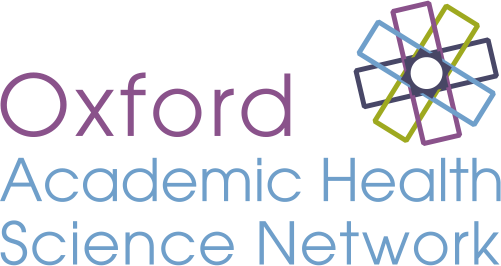Filter by product category
Quality evidence is required for regulation, policy making and implementation. Evidence generation should include not only the assessment of the device itself, but also the test processes and system dynamics. Clinical pathway examination is fundamental to incorporate healthcare benefits, patient safety and the healthcare impact. Accumulating appropriate evidence may result in a long lead-time from innovation to clinical adoption. If combined evidence requirements of users and policy decision makers are met efficiently, this may result in reducing the lead-time for the adoption of new technologies, allowing demonstrable benefits to patients and the NHS to be effectively realised. Stakeholder groups include patients and patient group representatives, clinicians, industry organisations, regulators and commissioners.
The Oxford AHSN and Academic Health Science Centre (AHSC) are ideally placed to become one of the leading test bed sites to conduct real world evaluation of combinatorial innovations integrating new technologies and service models as described in the NHS Five Year Forward View
Building on the success of the established Catapults, Innovate UK has established a new innovation centre, the Precision Medicine Catapult (PMC). The PMC is developing and testing its plans for tackling the industry bottlenecks - around business models, test development, clinical trial networks, data services and healthcare service delivery. Six regional hubs across the UK will act as local centres for precision medicine and help to develop innovative technologies for healthcare. The hubs in Belfast, Cardiff, Glasgow, Leeds, Manchester and Oxford will be part of the Cambridge-based Precision Medicine Catapult technology and innovation centre.
Regulatory approval evaluates the quality, safety and efficacy of a product in order to grant marketing authorisation, allowing a product to be placed on the market. The centralised procedure is carried out by the European Medicines Agency (EMA) for marketing authorisation to all EU / EEA countries. The centralised procedure is the primary route for marketing authorisation and can be used by small molecules, biologics and vaccines. The centralised procedure is mandatory for medicines for HIV/AIDS, cancer, diabetes, neurodegenerative diseases, immune dysfunctions and viral diseases, and for ATMPs, ‘orphan medicines’, and medicines derived from biotechnology processes
- For some innovative products it is possible to go via the national / decentralised / mutual recognition route but this is rare
- Note that there is an accelerated procedure available for vaccines which is approximately two months shorter
- A marketing authorisation under exceptional circumstances may be granted to medicines where the applicant is unable to provide comprehensive data on efficacy and safety under normal conditions of use
- An accelerated assessment procedure is available for medicines which are of major public health interest
- Conditional marketing authorisation may be granted on the basis of less complete data than normal for medicines for orphan designations, seriously debilitating or life-threatening diseases, and use in emergency situations
The Early Access to Medicines Scheme (EAMS) provides a framework in which patients can receive a promising new medicine prior to EMA approval on the basis of Phase III data (or in exceptional circumstances, during Phase II), significantly speeding access to medicines for certain products. It is worth considering application for EAMS if your medicine displays all of the following criteria:
- Serves unmet need for life threatening / debilitating condition
- Likely to offer major advantage over current UK methods
- Potential adverse effects likely to be outweighed by benefits
The Early Access to Medicines Scheme is a scheme to facilitate access to promising new medicines before they are licensed by the European Union. It is conducted in parallel with the development process. The first stage- receiving a Promising Innovative Medicine (PIM) designation- is an early indication that a product is a future candidate for EAMS following further development; PIM designation can support businesses’ ability to attract capital from investors during drug development. The second stage, MHRA approval following a scientific review, assesses the benefits and risks of a medicine and supports healthcare professionals and patients to make a treatment decision on using the medicine before it has been approved by the EMA. Medicines can apply to EAMS if they meet the following criteria:
- Serves unmet need for life threatening / debilitating condition
- Likely to offer major advantage over current UK methods
- Potential adverse effects likely to be outweighed by benefits
The NICE Topic Selection process for Technology Appraisals (TA) and highly specialised technologies (HST) is a process for deciding which topics NICE will produce technology appraisal guidance on. Most topics are identified by the National Institute for Health Research (NIHR) horizon scanning activities; NIHR aims to notify NICE of new drugs in development 20 months before marketing authorisation and 15 months for new indications. The Topic Selection process aims to achieve the following:
- Address topics of importance to patients, carers, healthcare professionals, commissioners and other key stakeholders
- Use a standardised, transparent and rapid process that makes the best use of NHS resources
Topics are considered when all the following are true:
- There is likely to be significant patient benefit in terms of efficacy, administration or improved side-effect profile
- The new product is likely to be at a significantly different price to current standard treatment
- There is appropriate evidence to support the appraisal
- The relevant clinical questions can be addressed by applying the technology appraisal methodology
Topics are given importance based on a prioritisation criteria, including population size, disease severity, resource impact and the incremental benefit of NICE carrying out a technology appraisal
Designed & produced by www.imageworks.co.uk





Comments are closed.